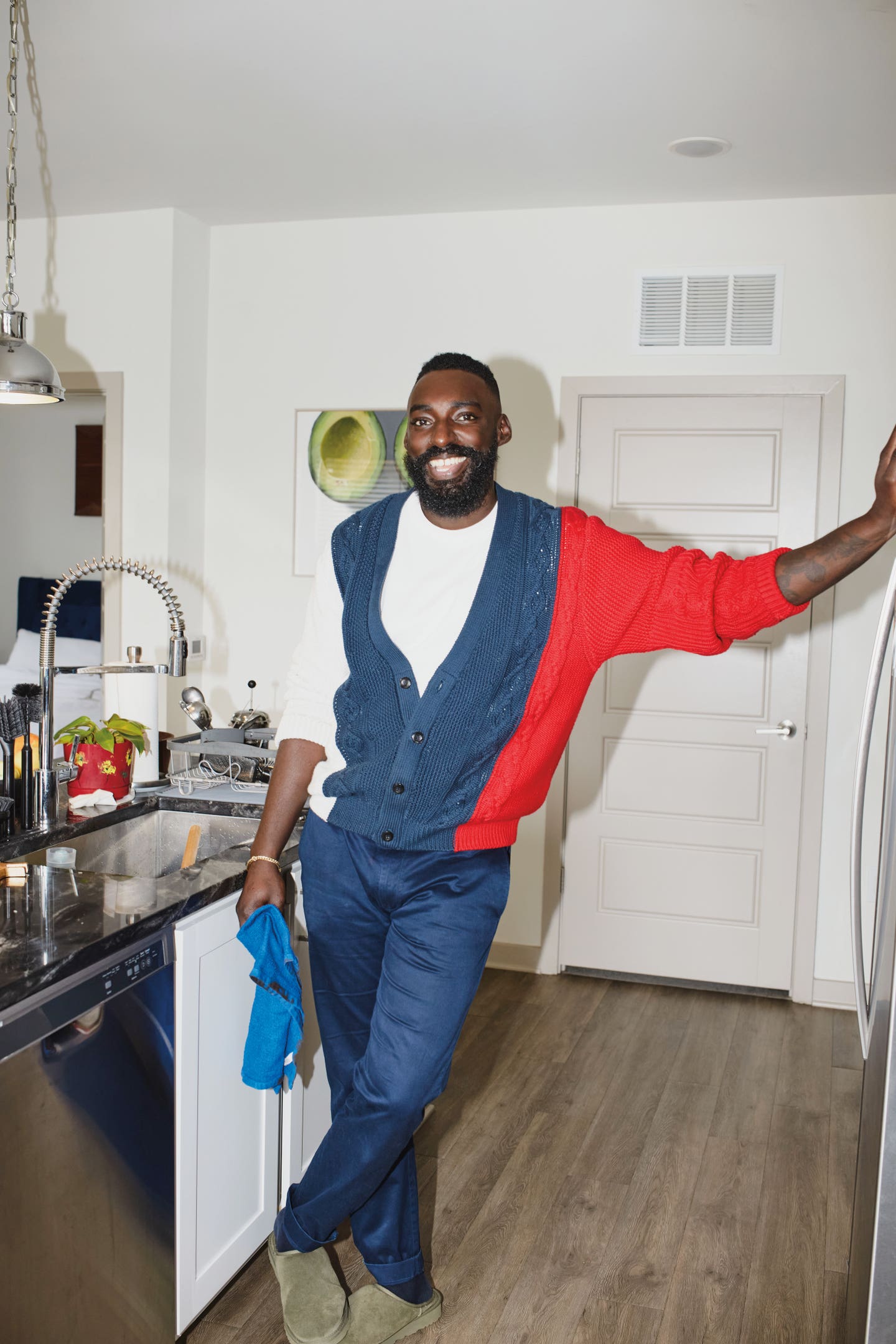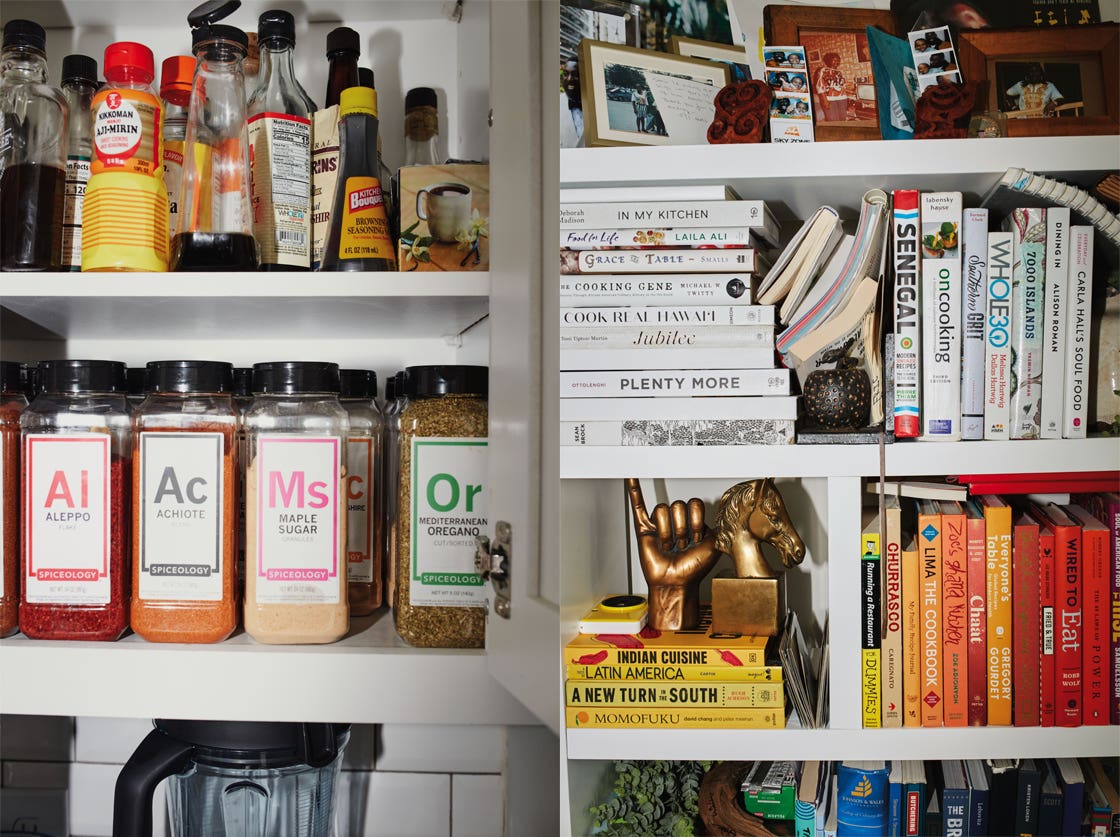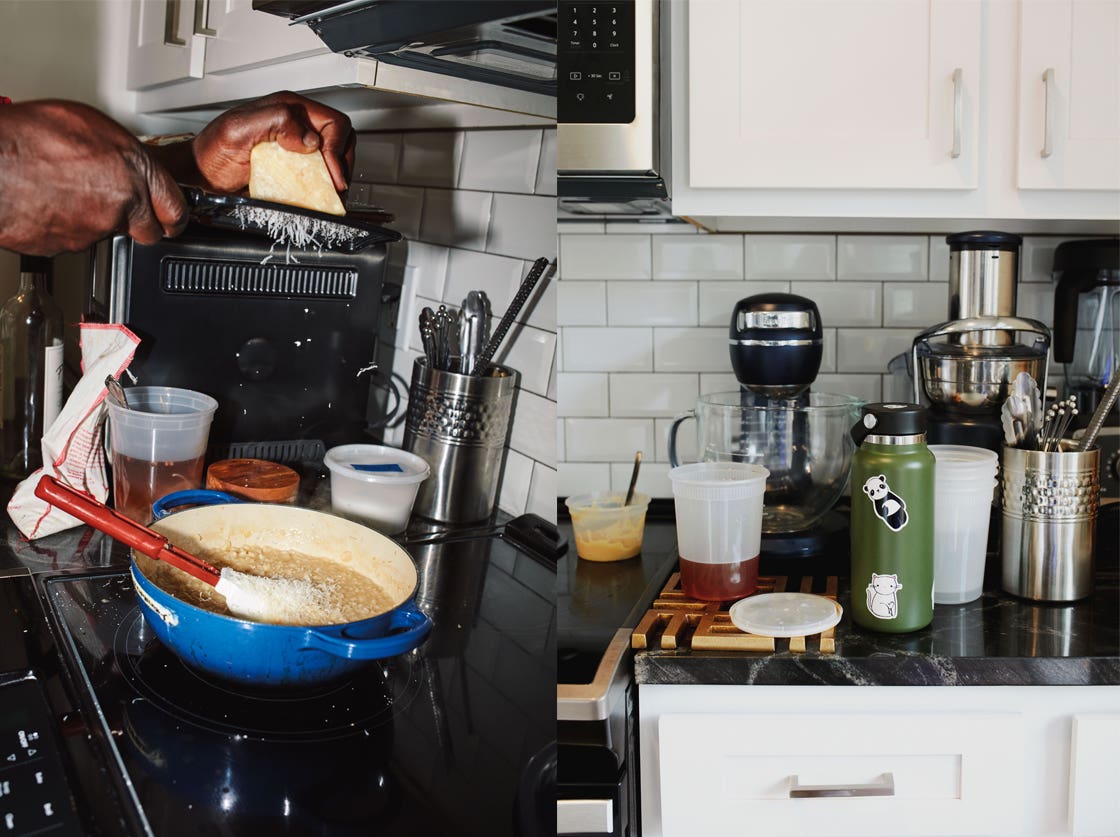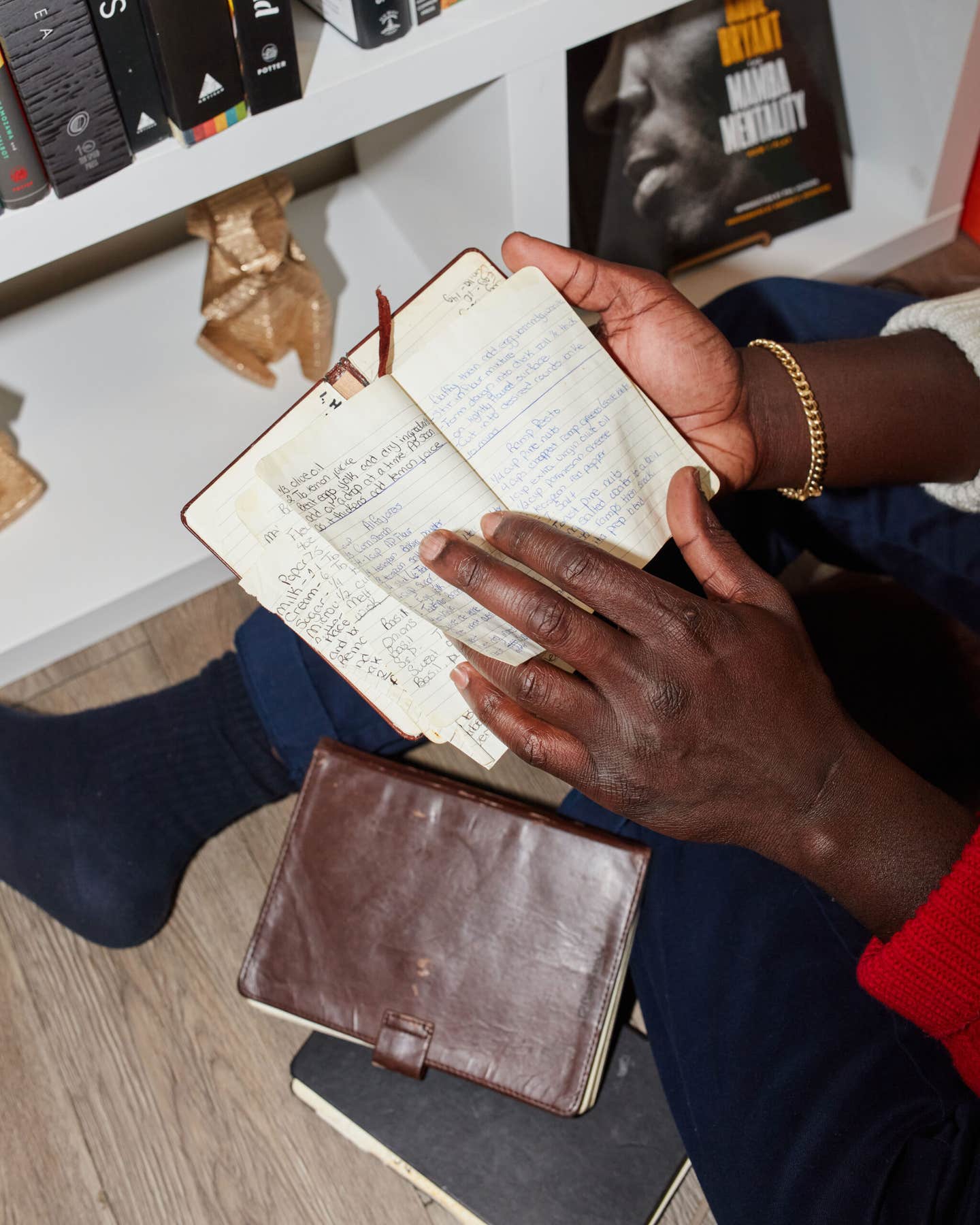At Home With Chef Eric Adjepong
A conversation with the food TV star about how West African cuisine became the foundation of his culinary path.

Rich, comforting stews laced with tomato and pepper. African music. Adinkra symbols illustrating Ghanaian proverbs and adages. Growing up in Yonkers, north of New York City, Eric Adjepong hadn’t yet realized the impact of these key memories. Today it’s clear to him that the tastes, smells, sights, and sounds of his childhood kitchen—the beating heart of his family home—pointed to Ghana. Eric was born and raised in the United States, but both of his parents grew up in the West African nation. His mother, Abena, passed down the wisdom of her culture to her children. When Eric started cooking, that understanding became the foundation of his culinary path.
I first met the now 36-year-old chef in 2019 at a pop-up at Craft in Manhattan. He had recently finished strong as a finalist on season 16 of Bravo’s “Top Chef,” where he explored the story of the transatlantic slave trade and the many ways that history still connects the flavors of West Africa to the United States, South America, and the Caribbean. As he and his team cooked in Craft’s private event space, I noticed West African ingredients like palm wine and shrimp powder alongside Asian, French, Italian, and North American products. He used these global components in tandem; each bolstered the next, lending their own individual flavors and textures. In dishes like jerk-rubbed steak tartare and corn and goat’s milk pudding with hibiscus-tinted tapioca, I could see that, in Eric’s kitchen, West African cuisine blended seamlessly with dishes from all over the world while retaining its identity and depth—echoing the wisdom of enslaved Africans forcibly moved to new lands centuries prior.
Now a fixture on food TV, Eric is also a children’s book author and an avid traveler. And he’s hard at work on his first cookbook, Ghana to the World: Cooking the Lessons of Sankofa, a project on which I’ve had the pleasure of collaborating with him since 2020. Recently, I caught up with him in his Maryland home kitchen to learn about how his travels have shaped not just that room, but also the ways he cooks for his family today.

Let’s start at the beginning: We’ve talked a lot about your childhood kitchen while working on your cookbook. If you had to describe it in one word, what would that be?
I would say it was active. Growing up in a two-family household with my three other siblings in the house, and my cousins, there was always a lot going on. The energy in the kitchen as people were coming in and out, and my mom or my aunt were cooking or catching up over tea—there were always baskets of yams or plantains on the floor and big bags of rice—that active kitchen is the genesis of a lot of my family memories.
How would you describe your home kitchen?
It isn’t as busy as that one was. [Laughs] I’m barely home now between travel and filming. When I do get back I still like to cook. This week is a perfect example because it was my daughter, Lennox’s, birthday. I had family come down from New York and I made a bunch of food. When there’s a family event, I feel a similar energy to the kitchen that I remember growing up in, especially when everybody comes in and unpacks, and just naturally congregates in the kitchen. It made me feel a little nostalgic to be there, with the same cousins and siblings, but now it’s our children running through and playing.

What was the menu for the day?
Well it was a sleepover, so I made some eggs, bacon, and cinnamon rolls in the morning for the kids. For lunch, I made a super simple shrimp fried rice, roasted cabbage, and fried chicken because my daughter is a big fan of fried chicken.
What tools do you always have on hand?
I have a little bain-marie that I keep all of my go-to essentials in, like spatulas, wire whisks, a cake tester, tasting spoons, a mini strainer, tongs, and a Microplane. I travel with that everywhere I go and if I’m at home, it’s right next to my stovetop.
What ingredients do you keep at home?
I always have roasted garlic and ginger paste somewhere in the freezer, like my mom did growing up. You can take a couple of tablespoons and add it to rice, pasta, marinara sauce, stew, whatever. It’s a great foundational building piece. Lemons and limes. And I also always have spices like berbere or all-purpose seasonings like seasoned salts, a bunch of ’em.

Something that came up while we were working on your cookbook is the idea of how home kitchens can transport you via cooking. Your mom cooking West African dishes in Yonkers, for example, was trying to make sure you and your family had that connection to your culture. When you’re home from traveling, what do you like to make? Do you have a go-to meal or are you experimenting, playing around?
I experiment the most with South [Asian] and Southeast Asian flavors at home. I love Thai, Vietnamese, and Indian food. There are a lot of similarities between West African cuisine and food from those areas, in the variety of textures, and in their earthy spices. I always try to take inspiration from recent travels—I may see a cool combination of ingredients or a dish and I keep that in my memory bank for when I’m back in my kitchen, or I just hop into the pantry or the freezer, see what I have in there and just start riffing. I may be looking through a cookbook and want to try something different. It really all depends on what the mood is.
What inspires that kind of experimentation?
I think my impulse to combine food cultures happens organically through travel. I’m able to try foods from different mom-and-pop restaurants, Michelin-rated restaurants, and even food stalls, and I’m inspired by all kinds of cooks, really. You know, I don’t meet a lot of people who genuinely like to cook. I meet a lot of people who like to eat and like to go to restaurants. But cooking is such a craft and I always appreciate when somebody else, no matter where they’re from, loves that craft too.

That’s a great point. I worked with a bartender once who said people like to drink because they like the way alcohol makes them feel, and that rarely do they like the taste. It’s a means to an end. For a lot of people, cooking’s kind of the same: It’s a means to an end rather than a joyful process.
I think a lot of people experience that. But for me, I really like the process. But there are also happy mistakes that can happen in a kitchen, you know what I mean? It’s all about not being afraid to try new things.
That’s good advice. I think people assume when you cook professionally or write about food for a living that you don’t make mistakes, but we’re human! Have there been any recent happy accidents in your home kitchen?
Yes. It wasn’t anything major, but I was embarrassed the other day ’cause I was making a grilled cheese sandwich for Lennox and I completely forgot that it was on the stove. The whole thing was burnt. [Laughs] So to your point, even chefs can mess up something as simple as a grilled cheese sandwich. Anything can go awry when you’re not paying attention.
Keep Reading
Continue to Next Story










